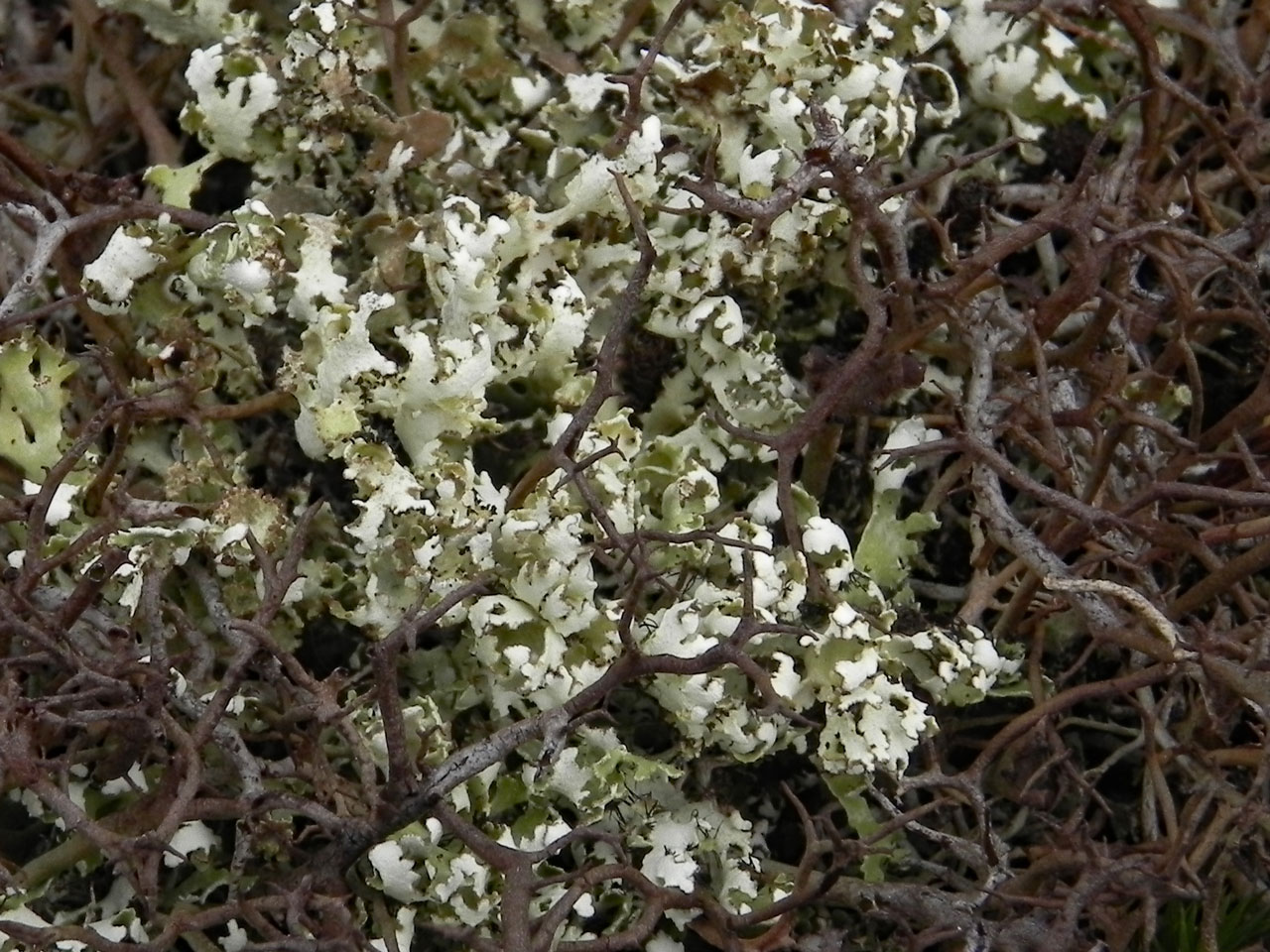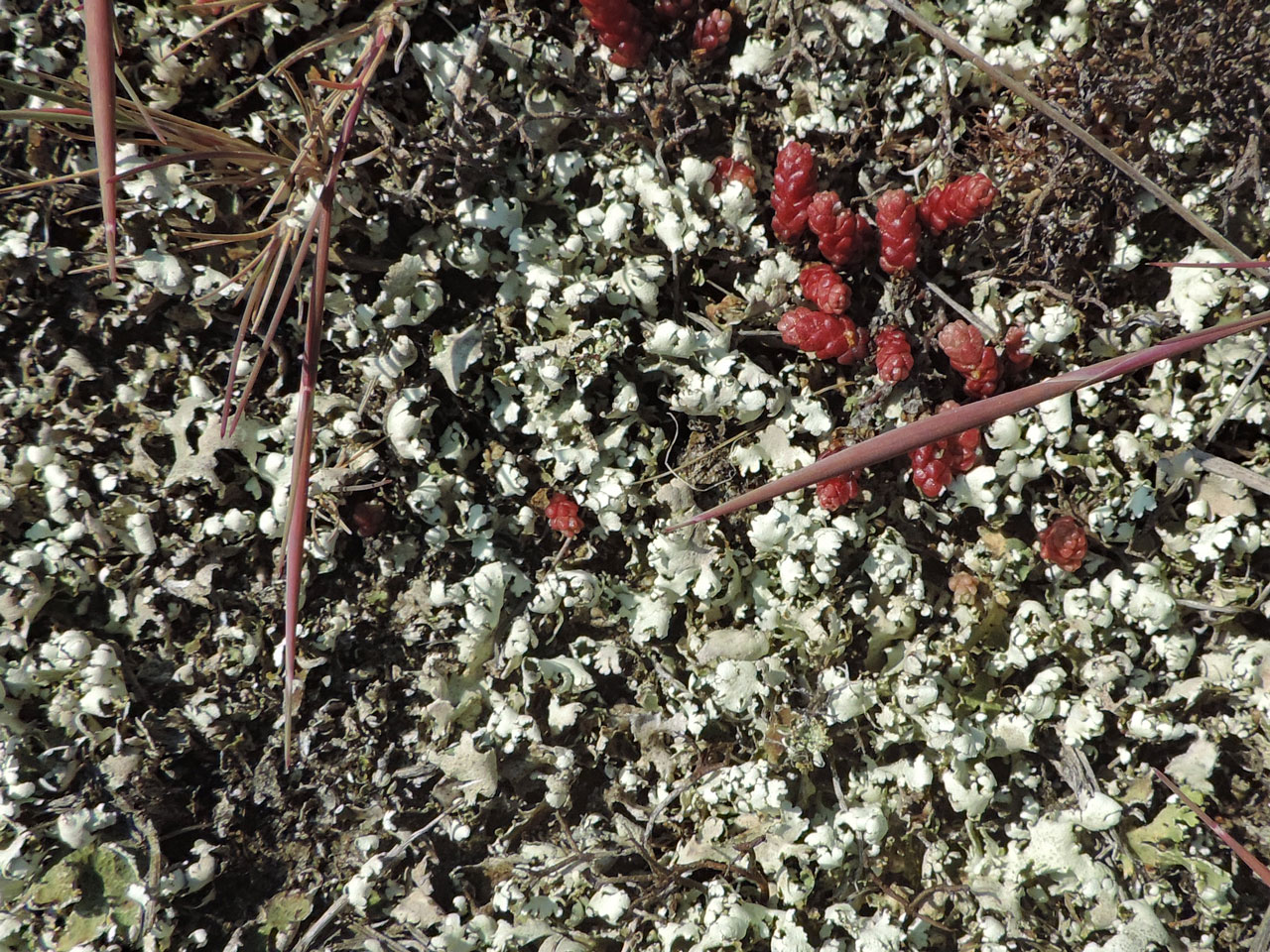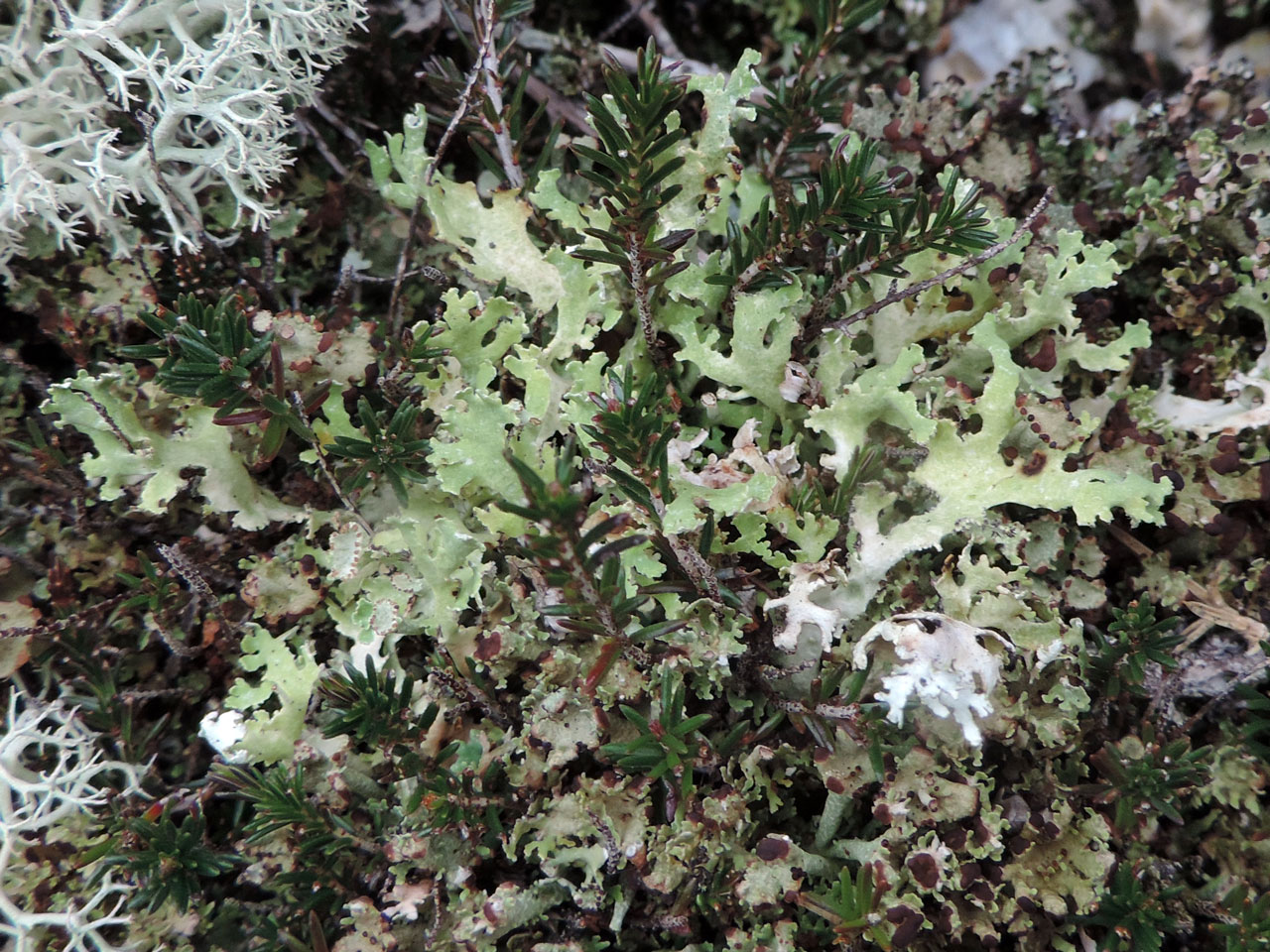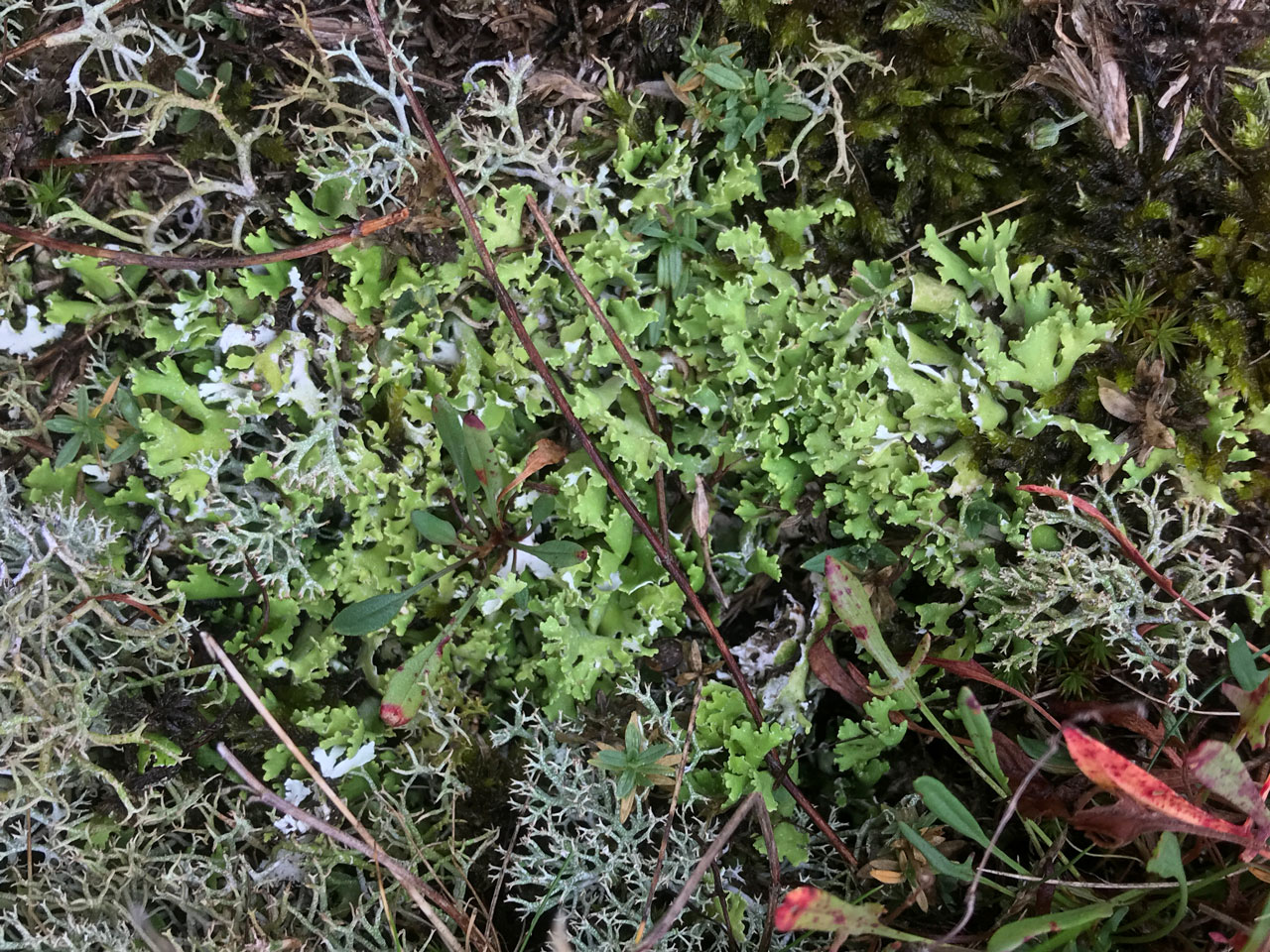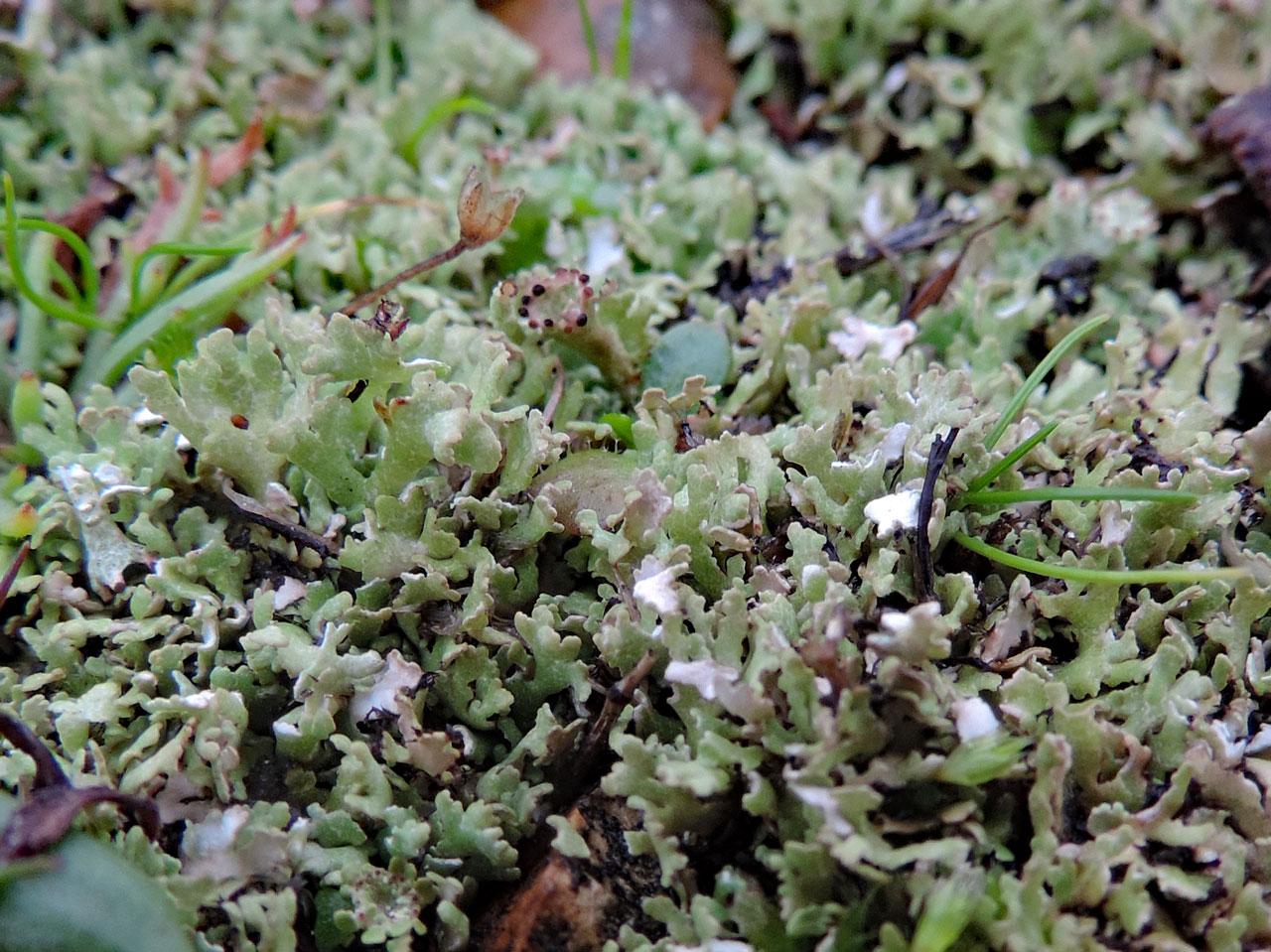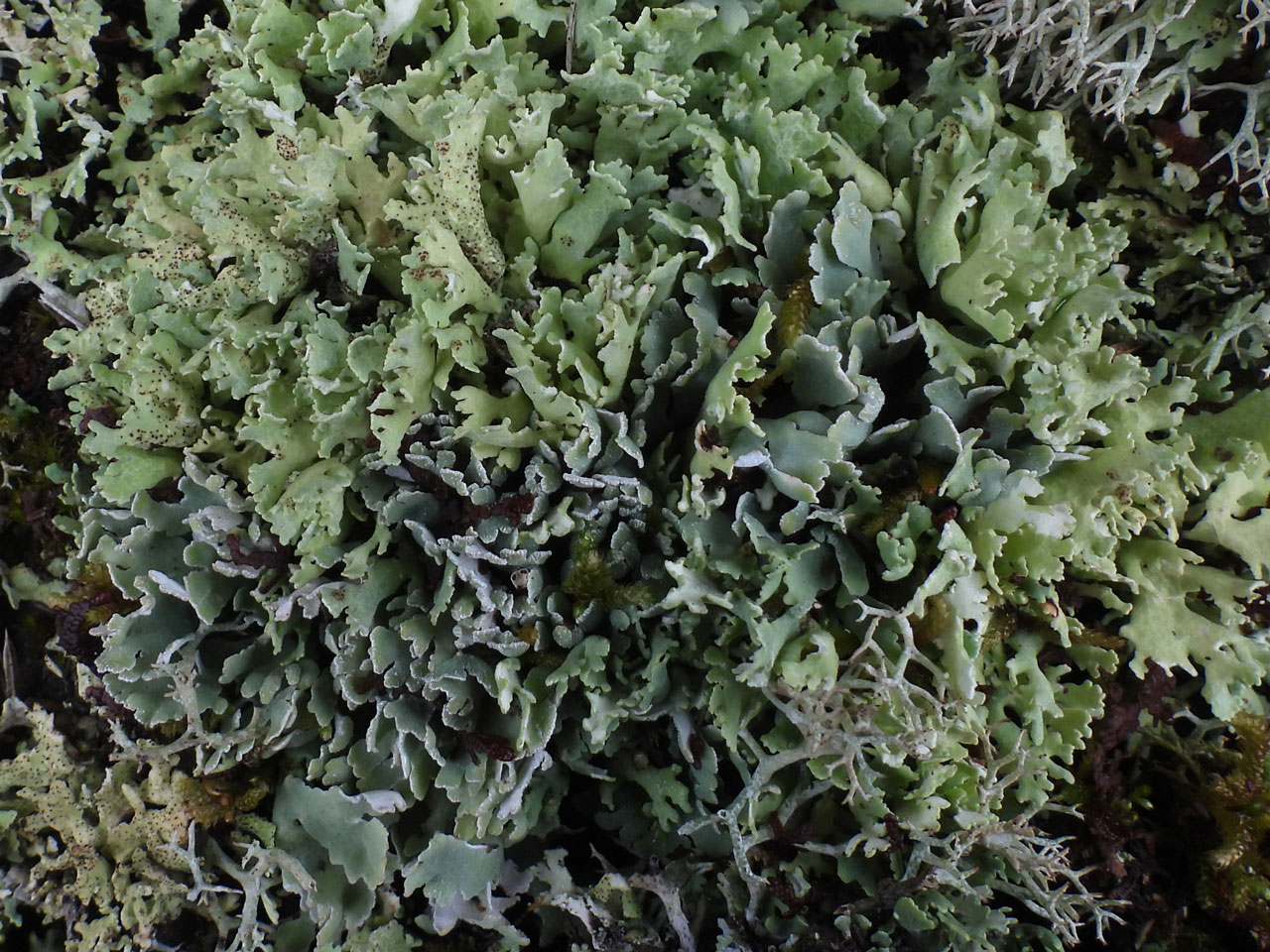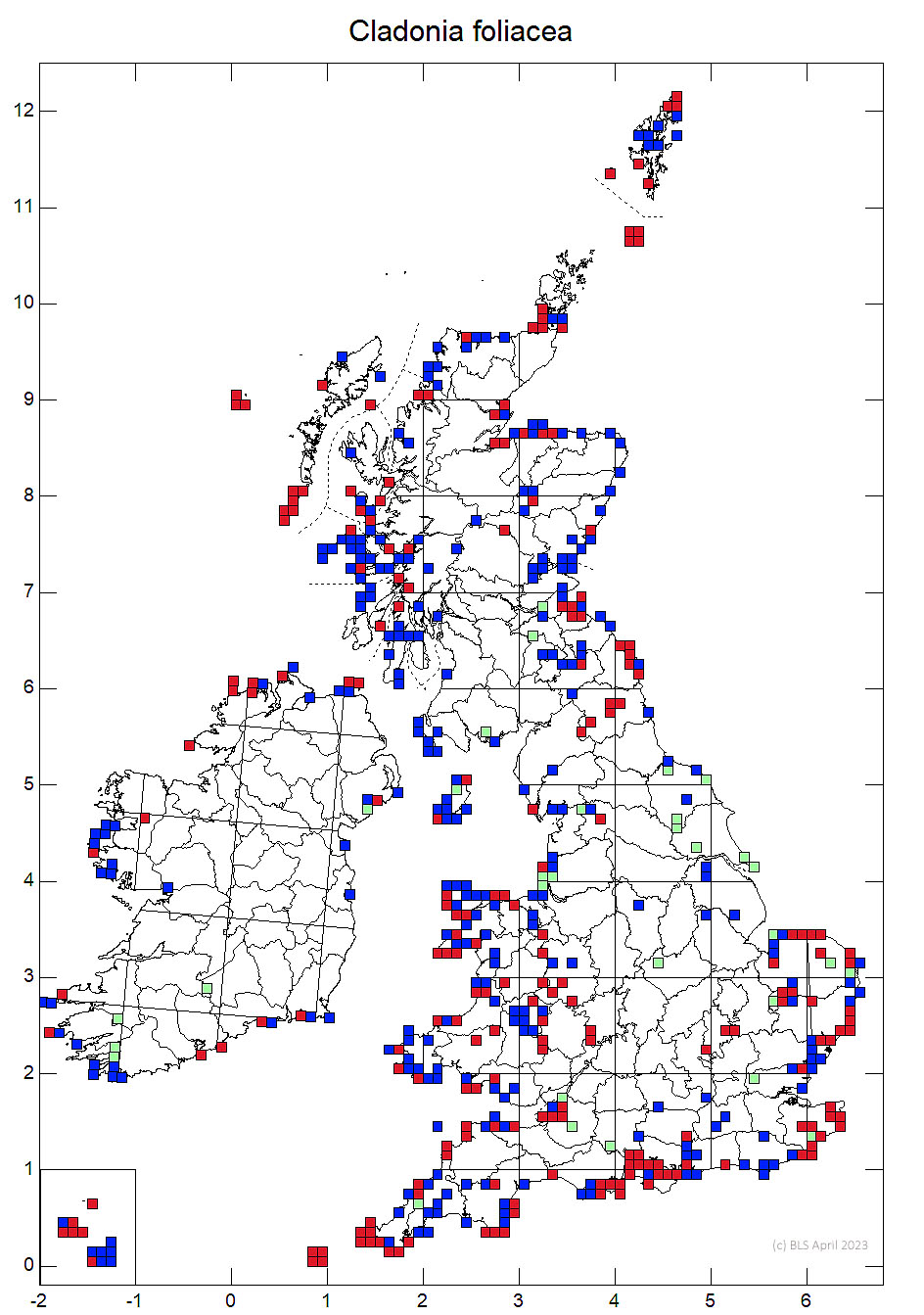Cladonia foliacea
A distinctive Cladonia forming squamule mats, occasionally with cups, with large basal squamules which are yellow-green on top and snowy white below. The latter are displayed when the thallus is desiccated in summer as the squamules curl over, earning the lichen its Dutch name of Zomersneeuw: Summer Snow. Found mainly in mildly acidic to calcareous short open coastal vegetation on coastal slopes, stabilised dunes and stabilised shingle grasslands. Much rarer and declining inland in sandy acid grassland and calcicolous grasslands. Very variable with extreme morphs formerly named as separate species; Cladonia convoluta with very long squamules and Cladonia angustiloba with very narrow and divided suqmules.
Podetia to 6 mm tall, often absent, smooth, ± evenly corticate, with a ± regular cups. Basal squamules predominant, elongate, 4–10 (–25) × 1–3 (–8) mm, also as narrow much branched morphs with the squamules 0.3-0.5 mm wide, very variable, lobate to deeply incised, often ascending, recurved, forming compact mats or ± straggling clusters; upper surface greyish yellow to yellow-green; lower surface white sometimes with a pale creamy-yellow tinge, with occasional tufts of black, marginal hairs. Apothecia brown, on cup rims, very rare. Pycnidia dark brown, frequent on basal squamules. Thallus C–, K–, KC+ yellow, Pd+ red, UV– (fumarprotocetraric and usnic acids). Other chemotypes are found outside the region.
Cladonia convoluta has been distinguished from this species; it was described as having larger squamules (15– 25 × 2–8 mm) and occurring in calcareous habitats by James (2009), but over 2cm long in other sources. Other that size, in which there is no discontinuity, there are no reported consistent differences between the two taxa based either on morphological or molecular data (Pino-Bodas et al, 2018). They also established that C. angustiloba (Ahti & Aptroot 2009), should be treated as a further synonym of C. foliacea. This morph is probably widespread in western coastal habitats and is rather distinct with narrow much branched basal squamules 0.5 – 2 x 0.3 – 0.5 mm.
Cladonia foliacea often occurs with C. firma, which has squamules which are white, ± suffused violet-grey below, grey-green to brown above, and is K+ yellow. C. luteoalba, also with yellowish squamules, has ± rounded, scarcely indented squamules with a pale yellow, cottony-arachnoid lower surface, is Pd– and grows in very different acid moorland habitats. When wet, the yellow green colour is much less distinct and care is need to distinguish from other species such as Cladonia cervicornis. The latter also has a morph with narrow bifurcating basal squamules that resembles C. angustiloba, and occurs in similar habitats, but these are yellow-brown above and grey-brown below.
In moss-lichen swards on well-drained mildly acidic to ± basic soils and humus-stabilised sand dunes and shingle, in wind-swept, sunny situations, sometimes in rock crevices in both acid and calcareous soils. In more extreme habitats distinctive morphs occur, with the narrow squamules of the angustiloba morph in exposed acid coastal vegetation and the large convoluta morph on calcareous soils and sheltered coastal habitats.

Throughout Britain and Ireland, predominantly coastal, more rarely inland; common, but mainly found in high quality habitats.
Rare and declining in lowland England
Ahti, T. & Aptroot, A. (2009). Two new species of Cladonia from the Azores. Bibliotheca Lichenologica 99: 11–17.
James, P.W. (2009). Cladonia. In: Lichens of Great Britain and Ireland (Smith, C.W., Aptroot, A., Coppins, B.J., Fletcher, A., Gilbert, O.L., James, P.W. & Wolselsey, P.A. eds): 309–338. London: British Lichen Society.
Pino-Bodas, R., Burgaz, A.R., Ahti, T. & Stenroos, S. (2018). Taxonomy of Cladonia angustiloba and related species. Lichenologist 50: 267–282.
Pino-Bodas, R., Martín, M.P. & Burgaz, A.R. (2010). Insight into the Cladonia convoluta – C. foliacea (Cladoniaceae, Ascomycota) complex and related species, revealed through morphological, biochemical and phylogenetic analyses. Systematics and Biodiversity 8: 575–586.
Pino-Bodas, R., Sanderson, N., Cannon, P., Aptroot, A., Coppins, B., Orange, A. & Simkin, J. (2021). Lecanorales: Cladoniaceae, including the genera Cladonia, Pilophorus and Pycnothelia. Revisions of British and Irish Lichens 19: 1-45. Link
Text by N A Sanderson, based Pino-Bodas et al (2021)
